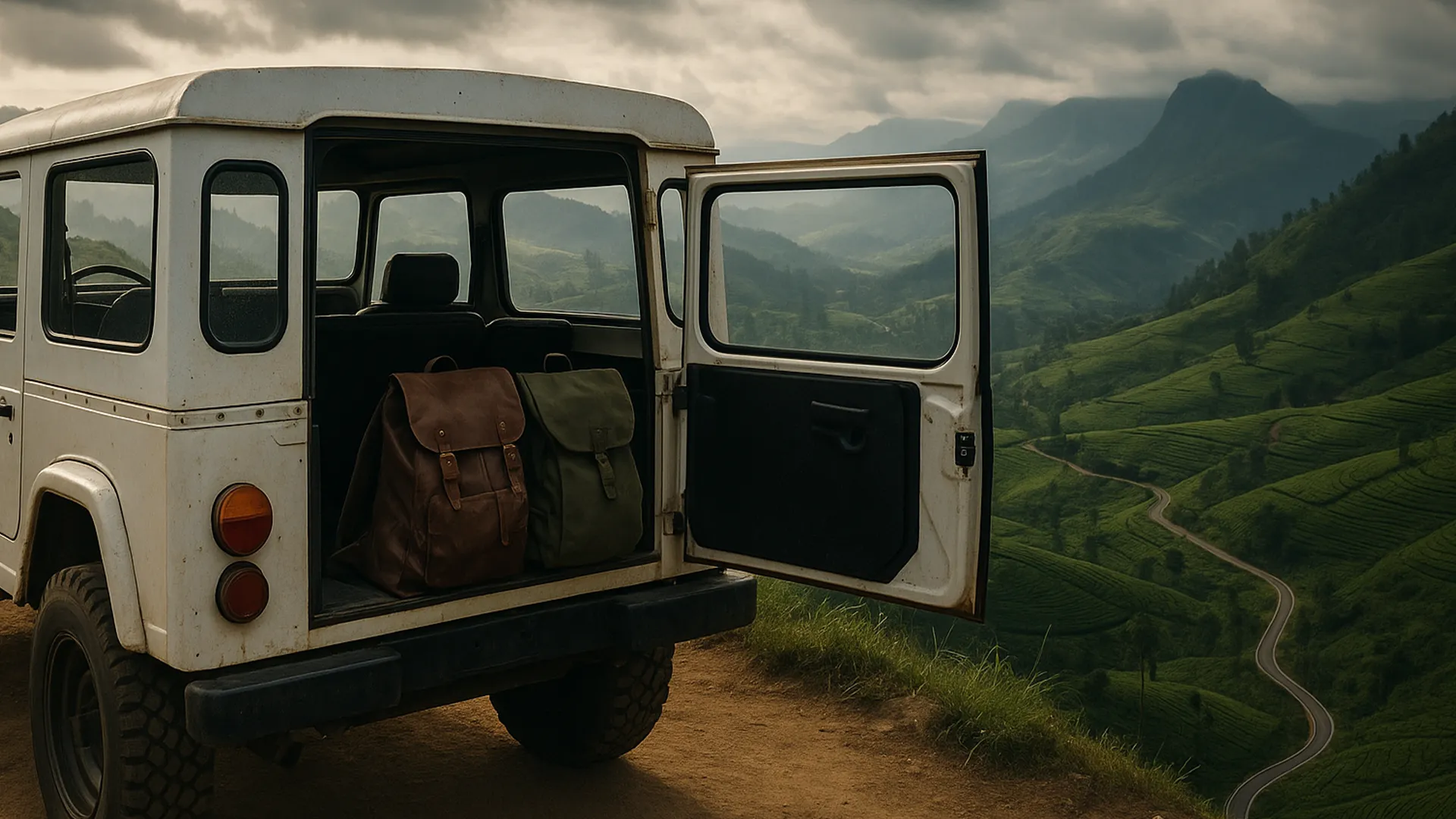
Sri Lanka, with its compact size, friendly locals, and incredible variety of activities, is a secret superhero of family travel. It’s a country where a child’s imagination can run wild, picturing elephants on safari, exploring ancient fortress ruins, and splashing in warm ocean waves. But the success of any family holiday often hinges on one crucial element: the home base. Choosing the right hotel or resort can transform a good trip into an unforgettable one, for both parents and kids alike.
The first and most important decision is location. For families with younger children, the calmer, shallow waters of the southwest coast, like those in Bentota, Kalutara, or Wadduwa, are ideal. These beaches provide a safe environment for paddling and building sandcastles, and the resorts here are well-versed in catering to families. For those with older, more adventurous kids, the cultural triangle (Sigiriya, Dambulla, Polonnaruwa) offers a thrilling immersion into history and wildlife. Wandering through ancient kingdoms and going on safari to see elephants, leopards, and sloth bears is like stepping into a living history and geography book. The hill country, with its train rides through tea plantations and cooler climate, offers a completely different, but equally enchanting, experience.
Once you’ve chosen your region, the room configuration is your next priority. The classic hotel room with two double beds often works, but for more space and privacy, seeking out family suites or interconnected rooms is a game-changer. This allows parents to have their own space after the kids are asleep, creating a semblance of a normal evening. For larger families or those seeking a truly special experience, private villas are a magnificent option. Many villas come with their own small private pool, a living area, and often, the invaluable services of a cook and butler. This allows for flexible meal times, the ability to prepare familiar snacks for fussy eaters, and a contained, safe environment for children to play.
The amenities within the hotel grounds are what truly define a family-friendly stay. A swimming pool is non-negotiable. After a day of sightseeing in the heat, a pool is the ultimate reward for kids and a place for them to burn off excess energy. Look for resorts with dedicated children’s pools or shallow areas. A kids’ club can be a welcome respite for parents, offering supervised activities like mask painting, coconut leaf weaving, or Sri Lankan drum lessons, giving children a fun cultural experience while adults enjoy a quiet meal or a spa treatment. Evenings can be magical, with many hotels organizing family-friendly events like movie nights under the stars or bonfires on the beach.
The adventure doesn’t stop at the hotel gate. Sri Lanka is packed with activities that captivate all ages. A safari in Udawalawe or Yala National Park is an absolute highlight, a real-life jungle book experience. Visiting the Pinnawala Elephant Orphanage, where you can watch dozens of elephants bathe in the river, is a sight that will stay with children forever. For a dose of culture, the ancient rock fortress of Sigiriya is a thrilling climb for older kids (with plenty of stops along the way), while the Dambulla Cave Temples, with their myriad Buddha statues, inspire awe. The key is to balance activity with downtime, ensuring everyone has enough energy and isn’t overwhelmed.
Practicalities are paramount. When booking, don’t hesitate to ask the hotel specific questions. Can they provide baby cots? Do they have high chairs in the restaurant? Is it possible to arrange for a babysitter? Sri Lankan people have a natural affinity for children, and staff are typically incredibly helpful and accommodating. Preparing a small first-aid kit with plasters, antiseptics, and stomach upset remedies is always wise. Finally, embrace the flexibility that a family trip requires. Some of the best memories will be unplanned: stopping for a fresh pineapple from a roadside stall, playing a game of cricket with local kids on the beach, or simply enjoying the slow, shared rhythm of a day together in a beautiful new place. Sri Lanka’s warmth extends beyond its climate, making it the perfect place to create those cherished family travel stories.
Powered by Froala Editor
Related Insights & Articles

September 18th 2025
Soul, Surf, and Asana: Why Sri Lanka is the Premier Surf and Yoga Destination
The connection is innate, a symbiotic relationship between two practices that seem, on the surface, to be very different. One is a dynamic dance with the raw power of nature; the other is a still, internal journey of breath and body. Yet, surfing and yoga are two sides of the same coin, both requiring core strength, balance, flexibility, and, most importantly, a focused, present mind. Nowhere is this connection celebrated more holistically than in Sri Lanka, where the environment itself seems designed to foster this perfect balance.
Imagine starting your day not with an alarm clock, but with the soft, melodic chanting from a nearby temple, mingling with the sound of crashing waves. You roll out your mat in an open-air shala, surrounded by palm trees, the morning sun warming your skin. Your yoga practice here is not just exercise; it is a ritual of preparation. The sequences are designed with the surfer in mind: deep hip openers like Pigeon Pose to counteract the constant pop-up motion, core-strengthening holds like Boat Pose to build stability on the board, and shoulder openers to ease the strain of paddling. But beyond the physical, the practice cultivates the mental toolkit you need for the ocean. Conscious breathing (pranayama) is training for when you’re held under by a wave, teaching you to stay calm and conserve energy. The focus on balance in poses like Tree Pose translates directly to finding your center on a moving surfboard.
After an hour of centering your body and mind, you head to the beach, feeling loose, focused, and energized. The transition from the stillness of your mat to the dynamic energy of the ocean is seamless. The patience you cultivated in holding a pose is now applied to waiting for the right wave. The awareness of your body’s alignment is now used to fine-tune your stance on the board. A surf session after yoga feels different. You’re more in tune with the water, more responsive, and less likely to fight against the wave’s energy. You find yourself flowing with it, applying the same principles of grace and presence you learned on the mat. When you wipe out - which you will - that yogic breath kicks in, keeping panic at bay.
The afternoons are for integration. This is the time for a deep, restorative yoga session or a guided meditation, perhaps focusing on the parts of the body that have been worked the hardest. It’s a chance to stretch out sore muscles, release tension in the upper back and shoulders, and allow the body to recover and repair. This conscious recovery is what allows you to surf day after day without burning out. It turns a surf trip from a purely physical challenge into a true wellness retreat. This holistic approach is what sets Sri Lankan surf and yoga camps apart. They are built on the understanding that to perform well in the water, you must take care of your body and mind out of the water.
The setting itself is the final, crucial element. Sri Lanka’s natural beauty provides a constant, breathtaking backdrop for this journey. Practicing yoga as the sun rises over the Indian Ocean, or meditating to the sound of rustling coconut palms, adds a profound layer of connection to nature. The island’s spiritual heritage, visible in its countless temples and the daily rituals of its people, infuses the air with a sense of peace and mindfulness. You leave a surf and yoga retreat not just with a better pop-up or a deeper stretch, but with a renewed sense of inner calm, a body that feels both powerful and supple, and a lasting connection to the rhythmic pulse of the ocean and your own breath. It’s a transformative experience that redefines what a vacation can be.
Powered by Froala Editor

September 18th 2025
The Freedom of the Open Road: A Beginner's Guide to a Sri Lankan Road Trip
The concept is endlessly romantic: hiring your own vehicle, mapping out a route, and setting off on an adventure where the journey itself is the destination. In Sri Lanka, this dream is entirely attainable, offering a level of freedom and spontaneity that organized tours can never match. The island’s compact size means you can experience beach, mountain, jungle, and ancient city within a relatively short drive, each turn in the road revealing a new vista. However, a Sri Lankan road trip is also a unique beast, an exhilarating dance that requires a blend of preparation, patience, and a good sense of humor.
The first and most important decision is your choice of steed. For the rugged, off-the-beaten-path explorer, a 4x4 Jeep is the king of the road. It offers peace of mind on rough mountain tracks, during monsoon showers, and on the dusty trails near national parks. For the vast majority of travelers sticking to main roads, a small, nimble car is perfect. It’s economical on fuel, easy to park in tight spaces, and maneuverable in hectic traffic. The most iconic, and arguably most fun, option for the coastal areas is the tuk-tuk. Renting an auto-rickshaw for a few days to putter along the southern coastline is a truly authentic Sri Lankan experience. It’s slow, open-air, and allows you to feel every sight, sound, and smell of the country. Just be sure to pack light!
Navigating Sri Lankan roads is an adventure in itself. Google Maps is generally reliable for main routes, but it’s wise to have a general sense of direction. The most important rule to remember is that in Sri Lanka, you drive on the left. This seems simple but requires constant vigilance, especially when pulling out from a stop or navigating roundabouts. Sri Lankan driving might initially seem chaotic to an outsider - a lively symphony of honking, overtaking, and sharing the road with everything from buses and trucks to cows, dogs, and pedestrians. The honk is not aggressive; it’s communicative. It’s a way of saying “I’m here,” or “I’m overtaking.” Embrace it. The key is to drive defensively, be predictable, and never assume the right of way. Patience is your most valuable asset.
The magic of a road trip, however, lies in the unplanned stops. This is where your own wheels grant you the greatest gift: serendipity. You can pull over whenever you see something interesting. Perhaps it’s a bustling local market where you can sample exotic fruits. Maybe it’s a small, unnamed temple where a friendly priest shows you around. It could be a viewpoint that isn’t in any guidebook, where you can stop for a cup of wonderfully sweet local tea and just take in the landscape. You might find yourself invited to a local village wedding or stumble upon a beautiful, secluded waterfall. These are the moments that become the heart of your travel story, the moments you simply cannot schedule.
A well-planned road trip itinerary is a beautiful thing. You could start in the cultural triangle, exploring the ancient ruins of Anuradhapura and the rock fortress of Sigiriya. From there, wind your way up into the hill country on a spectacular train-like road, passing through tea plantations and stopping in Ella for a hike. Then, descend back to the coast, trading the cool mist for the warm sun, and spend your final days relaxing on the beaches of the south or east coast. Each leg of the journey offers a dramatically different world, all within a few hours' drive. With your own vehicle, you are the master of your time. You can leave at dawn, or you can sleep in. You can spend three hours at a site that captivates you, or move on quickly from one that doesn’t. The freedom is absolute. It’s a chance to write your own adventure, one kilometer at a time, in one of the most beautifully diverse islands on Earth.
Powered by Froala Editor

September 18th 2025
Beyond the Buffet: A Food Lover's Guide to Sri Lankan Hotel Cuisine
For many, the word "hotel food" conjures images of generic, lukewarm buffets designed to cater to the lowest common denominator. In Sri Lanka, however, this concept is delightfully upended. Here, your hotel is often the gateway to an authentic, vibrant, and complex culinary journey. The island’s cuisine is a bold, aromatic symphony of flavors, and many accommodations have embraced it, moving far beyond the standard toast and eggs to offer a genuine taste of local life.
The cornerstone of any Sri Lankan food experience is the mighty "Rice and Curry." This is not a single dish but a grand ensemble, a daily celebration of flavor and texture. At its best in smaller guesthouses and family-run hotels, this meal is a revelation. A generous mound of fluffy white rice is surrounded by a constellation of small bowls, each containing a different curry. There will be a dhal (lentil) curry, a deeply comforting and spiced staple. You’ll find a devilled dish - perhaps chicken or fish - tossed in a sweet, spicy, and tangy sauce with chunks of onion and bell pepper. A "mallum" or "sambol" will provide a fresh, sharp contrast; perhaps a pol sambol, a fiery mix of grated coconut, red onion, lime juice, and chili, or a gotu kola sambol, an earthy, finely chopped herbal salad. There will be a fried papadum for crunch and a sweet, tangy chutney made from fruits like mango or ambarella. This is not a meal you eat quickly; it’s an experience to be explored, each combination of flavors creating a new bite. The beauty of having this at your hotel is the ability to ask your host about each component, learning the stories behind the food.
Of course, the international traveler is also catered to with impeccable skill. The buffets at larger resorts, especially along the west coast, are feasts of incredible variety. Alongside the Sri Lankan specialties, you might find fresh seafood grills where you can choose your catch of the day, Italian pasta stations, Chinese wok dishes, and decadent dessert tables. This is where the island’s history as a trading port comes to life on a plate. The key is to use the buffet as a sampler platter - a chance to try a little bit of everything. Don't miss the hoppers (appa), bowl-shaped, lacy fermented rice flour pancakes, often served with a fried egg in the center and a side of spicy sambol. For breakfast, this is a quintessential Sri Lankan experience no hotel guest should skip.
A beautiful trend sweeping across Sri Lankan hotels is the farm-to-table experience. Especially prevalent in the hill country and eco-lodges, this concept connects your plate directly to the land. You might dine on vegetables harvested from the hotel’s own organic garden that morning, or enjoy fruit from the trees shading your balcony. This not only guarantees breathtaking freshness but also dramatically reduces the environmental footprint of your meal. It’s a powerful way to taste the true, unadulterated flavor of a green bean, a carrot, or a tomato, reminding you of the deep agricultural roots of the island.
For those with dietary restrictions, Sri Lanka is a surprisingly accommodating destination. The long-standing Buddhist and Hindu traditions mean vegetarianism is widely understood and respected. Many curries are naturally plant-based, and chefs are usually happy to adapt. Vegan travelers will also find a wealth of options, from jackfruit curries to coconut milk-based desserts. The abundance of fresh fruit - from tiny sweet bananas to juicy pineapples and magnificent mangosteens - means healthy, delicious options are always available. The key is communication; don’t hesitate to have a friendly chat with the hotel staff about your needs. Their inherent hospitality means they will often go out of their way to prepare something special for you.
Ultimately, dining at your Sri Lankan hotel is an integral part of the cultural immersion. It’s an opportunity to be adventurous, to ask questions, and to engage all your senses. From the fiery kick of a perfect curry to the sweet end of a creamy buffalo yogurt with treacle, your meals will form a vivid and delicious layer of memory. So move beyond the familiar, skip the plain toast, and dive fork-first into the incredible culinary world that your Sri Lankan hotel is waiting to share with you.
Powered by Froala Editor
